 |
Matronics Email Lists
Web Forum Interface to the Matronics Email Lists
|
| View previous topic :: View next topic |
| Author |
Message |
nuckolls.bob(at)aeroelect
Guest
|
 Posted: Wed Aug 01, 2012 6:17 pm Post subject: PM Alternator filter Capacitor - best practices Posted: Wed Aug 01, 2012 6:17 pm Post subject: PM Alternator filter Capacitor - best practices |
 |
|
At 06:45 PM 8/1/2012, you wrote:
| Quote: | Hmmmm... so why do we use this cap?
|
Now you done it . . . let's see if I recall.
I think I first saw it used on a power distribution
diagrams for some Rotax powered ultra-lights
back when I first started working in OBAM
aviation. Shucks . . . the rectifiers of AC
to DC power supplies had filter capacitors
on them . . . why not the rectified ac output
of a PM alternator?
The idea was attractive, only the numbers were
poorly understood. If you push 1 amp into a
1 Farad capacitor, you get a 1 volt per second
rate of rise in voltage. 10 amps is 10 volts
per second. Okay, how about a 1 microfarad
capacitor? The rise is 1 million times faster
or 10M volts per second. Now make the capacitor
20,000 times bigger and the voltage rise rate
drops by a factor of 20K or 500 volts per second.
Okay, the ripple period in the traces I published
for 4000 rpm was 7.5 milliseconds. .0075 x 500
= 3.75 volts is the best ripple reduction we might
expect from 20KF on a 10A machine. As you can see
from page 2 trace, the pk-pk excursions are already
below 400 mv. already 10X better than what we might expect
with but with no capacitor. To cut that to say, 40 mV
(nice anc quiet comparatively) we'd need a capacitor
100 times 20,000 or 2 Farads.
I was startled by the test results with the SD-8
on B&C's alternator stand. There was little or no
observable effect at ripple frequency for adding
the capacitor.
Yeah, we can buy such a critter but it's big,
heavy, expensive and goes toward an unnecessary
refinement of the system.
We know that a 3-phase alternator has about 5%
pk-pk ripple (0.75 volts on a 15v system)
plus transients. How many Farads would it take
to smooth say a 100A machine? The single phase
PM alternators like the SD-8 are obviously worse
but battery alone combined with loads at or
near max ratings have more smoothing effects than
the capacitor.
Given the physical impracticality of seeing
such pristine power, complimentary standards
and design goals were adopted to say (in Mil-
STD-704) that a 28v system can have 1 VRMS (3+
volts pk-pk) noise from 1 to 5K Hertz and
tapering off each side.
http://tinyurl.com/78kwfk8
1/2 that value for a 14v system.
The complimentary DO-160 design goals tell us
to EXPECT this kind of trash on the bus and
design to live with it.
The capacitor doesn't hurt anything and if
you have a particularly bad set of rectifier
switching transients (or similar fast rise
stuff elsewhere in the system, the 20-20K
computer grade capacitor will reduce the
effects of that stimulus.
Suffice it to say that MOST pilots now flying
such capacitors on their PM alternator installations
would notice nothing from the cockpit if that
capacitor were removed.
Radios and audio systems need really clean power
and the qualified designer provides smoothing
internally.
[img]cid:.0[/img]
Our audio isolation amplifier design uses the LM317
to provide a smooth source of +8 volts to run the
circuitry.
As a general rule, the kinds of stimulus that benefits
from any sort of bus voltage filtering is fast-rise
transients at a ripple-current rate. Folks mistakenly
believe their inductor/capacitor or just a capacitor
is bypassing AUDIO frequency energy when in fact, it's
high frequency (fast transients) at the audio rate.
As the numbers above suggest, there's no practical way
to filter alternator ripple from the bus. The snow-mobile
engines with lighting coils converted to electrical
system alternators may well have benefited from the
use of such capacitors . . . depends on vulnerabilities
inherent in their electro-whizzies. Our electro-whizzies
are suited by design to live in the world of trashy
busses.
This is why switchmode power supplies can be so small
when delivering outputs in the tens of amps . . . their
operating frequencies (hence ripple frequency) is quite
high which allows smaller capacitors and inductors to
do the same degree of smoothing.
You can leave the cap out and see if you hear any
alternator whine in the audio . . . odds are that you
will not.
Bob . . .
| | - The Matronics AeroElectric-List Email Forum - | | | Use the List Feature Navigator to browse the many List utilities available such as the Email Subscriptions page, Archive Search & Download, 7-Day Browse, Chat, FAQ, Photoshare, and much more:
http://www.matronics.com/Navigator?AeroElectric-List |
|
| Description: |
|
| Filesize: |
43.47 KB |
| Viewed: |
4185 Time(s) |
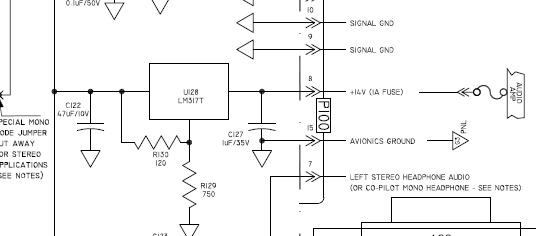
|
|
|
| Back to top |
|
 |
jloram
Joined: 07 Nov 2009
Posts: 54
Location: United States
|
 Posted: Wed Aug 01, 2012 7:19 pm Post subject: PM Alternator filter Capacitor - best practices Posted: Wed Aug 01, 2012 7:19 pm Post subject: PM Alternator filter Capacitor - best practices |
 |
|
So we're not trying to control the bandwidth of the regulator loop with the cap? Does the battery do that? Guess I don't really know what the frequency response of a lead-acid battery is. Probably dependent on the state of charge and the condition of the battery. And the load varies all over the place, both real and imaginary components.... What would it look like with and without the cap if the battery were out of the loop? ... Scary!
I'm running 3 phase (old Jab 3300).
Once I get this thing fired up I'll run some tests and let you know what happens...
Just thinking out loud, -john-
p.s. ran into a message the other day that you wrote back in 2007. Said you worked for H.L Yoh as a civilian instructor in the early 60's... Same here! At the Naval ETA school on Treasure Island. Wasn't that fun. I learned more electronics in six months instructing those kids than four years of collage!
| Quote: | From: owner-aeroelectric-list-server(at)matronics.com [mailto:owner-aeroelectric-list-server(at)matronics.com] On Behalf Of Robert L. Nuckolls, III
Sent: Wednesday, August 01, 2012 7:11 PM
To: aeroelectric-list(at)matronics.com
Subject: RE: PM Alternator filter Capacitor - best practices
At 06:45 PM 8/1/2012, you wrote:
| Quote: | Hmmmm... so why do we use this cap?
|
Now you done it . . . let's see if I recall.
I think I first saw it used on a power distribution
diagrams for some Rotax powered ultra-lights
back when I first started working in OBAM
aviation. Shucks . . . the rectifiers of AC
to DC power supplies had filter capacitors
on them . . . why not the rectified ac output
of a PM alternator?
The idea was attractive, only the numbers were
poorly understood. If you push 1 amp into a
1 Farad capacitor, you get a 1 volt per second
rate of rise in voltage. 10 amps is 10 volts
per second. Okay, how about a 1 microfarad
capacitor? The rise is 1 million times faster
or 10M volts per second. Now make the capacitor
20,000 times bigger and the voltage rise rate
drops by a factor of 20K or 500 volts per second.
Okay, the ripple period in the traces I published
for 4000 rpm was 7.5 milliseconds. .0075 x 500
= 3.75 volts is the best ripple reduction we might
expect from 20KF on a 10A machine. As you can see
from page 2 trace, the pk-pk excursions are already
below 400 mv. already 10X better than what we might expect
with but with no capacitor. To cut that to say, 40 mV
(nice anc quiet comparatively) we'd need a capacitor
100 times 20,000 or 2 Farads.
I was startled by the test results with the SD-8
on B&C's alternator stand. There was little or no
observable effect at ripple frequency for adding
the capacitor.
Yeah, we can buy such a critter but it's big,
heavy, expensive and goes toward an unnecessary
refinement of the system.
We know that a 3-phase alternator has about 5%
pk-pk ripple (0.75 volts on a 15v system)
plus transients. How many Farads would it take
to smooth say a 100A machine? The single phase
PM alternators like the SD-8 are obviously worse
but battery alone combined with loads at or
near max ratings have more smoothing effects than
the capacitor.
Given the physical impracticality of seeing
such pristine power, complimentary standards
and design goals were adopted to say (in Mil-
STD-704) that a 28v system can have 1 VRMS (3+
volts pk-pk) noise from 1 to 5K Hertz and
tapering off each side.
http://tinyurl.com/78kwfk8
1/2 that value for a 14v system.
The complimentary DO-160 design goals tell us
to EXPECT this kind of trash on the bus and
design to live with it.
The capacitor doesn't hurt anything and if
you have a particularly bad set of rectifier
switching transients (or similar fast rise
stuff elsewhere in the system, the 20-20K
computer grade capacitor will reduce the
effects of that stimulus.
Suffice it to say that MOST pilots now flying
such capacitors on their PM alternator installations
would notice nothing from the cockpit if that
capacitor were removed.
Radios and audio systems need really clean power
and the qualified designer provides smoothing
internally.
[img]cid:508045102(at)02082012-12D9[/img]
Our audio isolation amplifier design uses the LM317
to provide a smooth source of +8 volts to run the
circuitry.
As a general rule, the kinds of stimulus that benefits
from any sort of bus voltage filtering is fast-rise
transients at a ripple-current rate. Folks mistakenly
believe their inductor/capacitor or just a capacitor
is bypassing AUDIO frequency energy when in fact, it's
high frequency (fast transients) at the audio rate.
As the numbers above suggest, there's no practical way
to filter alternator ripple from the bus. The snow-mobile
engines with lighting coils converted to electrical
system alternators may well have benefited from the
use of such capacitors . . . depends on vulnerabilities
inherent in their electro-whizzies. Our electro-whizzies
are suited by design to live in the world of trashy
busses.
This is why switchmode power supplies can be so small
when delivering outputs in the tens of amps . . . their
operating frequencies (hence ripple frequency) is quite
high which allows smaller capacitors and inductors to
do the same degree of smoothing.
You can leave the cap out and see if you hear any
alternator whine in the audio . . . odds are that you
will not.
Bob . . .
|
| | - The Matronics AeroElectric-List Email Forum - | | | Use the List Feature Navigator to browse the many List utilities available such as the Email Subscriptions page, Archive Search & Download, 7-Day Browse, Chat, FAQ, Photoshare, and much more:
http://www.matronics.com/Navigator?AeroElectric-List |
|
| Description: |
|
| Filesize: |
43.47 KB |
| Viewed: |
4185 Time(s) |
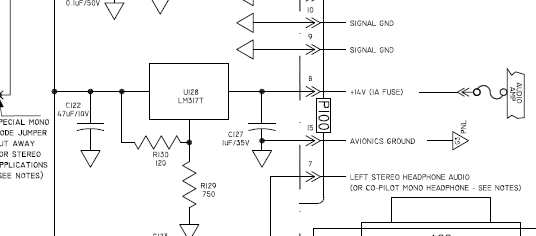
|
|
|
| Back to top |
|
 |
nuckolls.bob(at)aeroelect
Guest
|
 Posted: Fri Aug 03, 2012 8:34 am Post subject: PM Alternator filter Capacitor - best practices Posted: Fri Aug 03, 2012 8:34 am Post subject: PM Alternator filter Capacitor - best practices |
 |
|
| Quote: | And thank you for Villard's Memoir. I loved reading every bit of it!
Like every self-respecting EE I have kept my copy of Terman.
[img]cid:7.1.0.9.0.20120803101747.0479aac8(at)aeroelectric.com.0[/img]
|
I lost my copy during some move over the years. Thought
I might replace it from a used book store someday . . . have
you seen what they sell for now? Hang onto the copy you
have and be sure to include it in the accounting of
your retirement portfolio.
And in every other class you'd get one 'ringer'. A kid fresh out of engineering school who would nail you to the chalk board at the slightest slip-up!!! You either got those guys on your side right away or you were in for some tough sledding!
I don't recall having encountered that from the
run-of-the-mill students. Most of my guys were fresh
out of boot-camp. I did have a chief who was re-upping
and wanting to expand his technological horizons. He
and I had an arm-wrestling match over my dismal record
for Friday High-Class honors . . . but that's another
story. He did very well in his studies and received
benefits befitting his due diligence.
| Quote: | [img]cid:7.1.0.9.0.20120803101747.0479aac8(at)aeroelectric.com.1[/img]
I have a couple of these first generation DI-148Us.
It will run at 11 KHz sampling rate on one channel. |
Cool! Let's do some good numbers gathering off your
ship's electrical system when it's appropriate.
| Quote: |
Tell me more about your dynamic load bank. Sounds like just the ticket. |
Here's one I started for my shop some years ago but
when the project-of-need went away, it's been waiting
for a reason to finish it.
The one I built for HBC might still be there but
since it never got a corporate acquisition sticker
or tool number put on it, it's probably been pitched
by now. There's nobody left there who saw what it does
or how to use it.
[img]cid:7.1.0.9.0.20120803101747.0479aac8(at)aeroelectric.com.2[/img]
The thing was used to study the effects of rapid
load dump and onset for some led lighting supplies
in the Hawker 800. When the cabin lights 'flicker'
in a $14M airplane, the boss can only sit there an
fume that this crap doesn't happen in his $60K
automobile.
The notion was to excite the bus with repetitive
square-wave loads either manually by external
controls while gathering responses and/or trying
fixes elsewhere.
For our purposes, a 555 timer, a boss-hog fet
and a power resistor could be quickly brass-boarded
into a similarly useful fixture.
[img]cid:7.1.0.9.0.20120803101747.0479aac8(at)aeroelectric.com.3[/img]
This test fixture would apply/release a load
at some periodic rate (in this case about 0.5Hz)
to let you observe system response after
the event.
Your Dataq DAS in the single channel, fast
acquisition mode would do nicely to record
the event.
Bob . . .
| | - The Matronics AeroElectric-List Email Forum - | | | Use the List Feature Navigator to browse the many List utilities available such as the Email Subscriptions page, Archive Search & Download, 7-Day Browse, Chat, FAQ, Photoshare, and much more:
http://www.matronics.com/Navigator?AeroElectric-List |
|
| Description: |
|
| Filesize: |
61.82 KB |
| Viewed: |
4169 Time(s) |
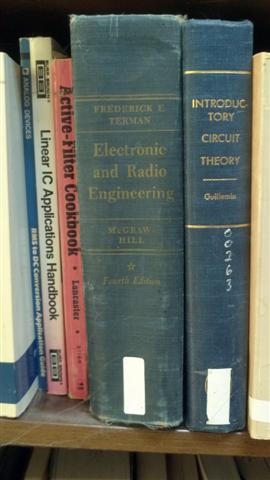
|
| Description: |
|
| Filesize: |
117.85 KB |
| Viewed: |
4169 Time(s) |
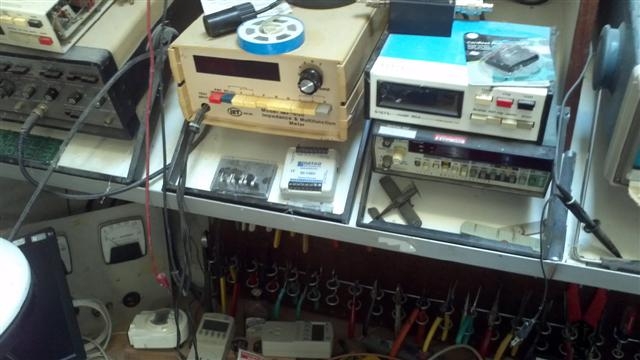
|
| Description: |
|
| Filesize: |
219.72 KB |
| Viewed: |
4169 Time(s) |
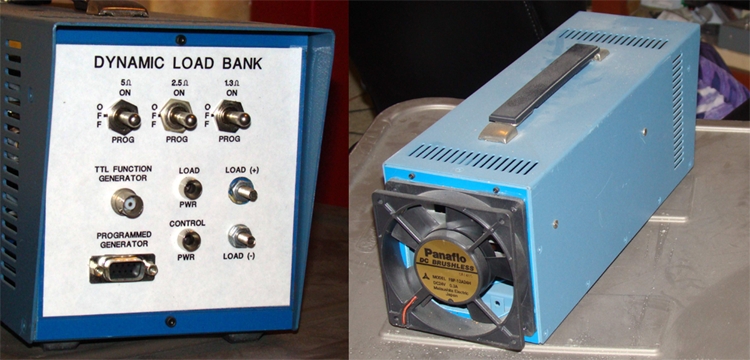
|
| Description: |
|
| Filesize: |
90.7 KB |
| Viewed: |
4169 Time(s) |
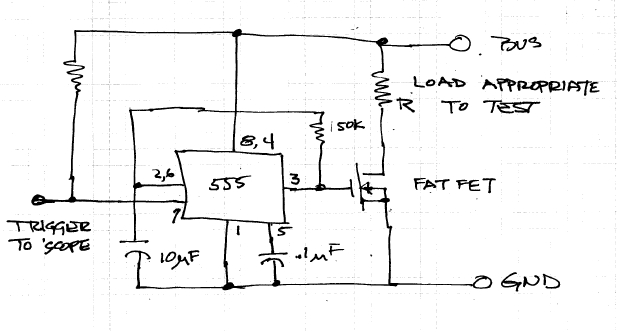
|
|
|
| Back to top |
|
 |
|
|
You cannot post new topics in this forum
You cannot reply to topics in this forum
You cannot edit your posts in this forum
You cannot delete your posts in this forum
You cannot vote in polls in this forum
You cannot attach files in this forum
You can download files in this forum
|
Powered by phpBB © 2001, 2005 phpBB Group
|








